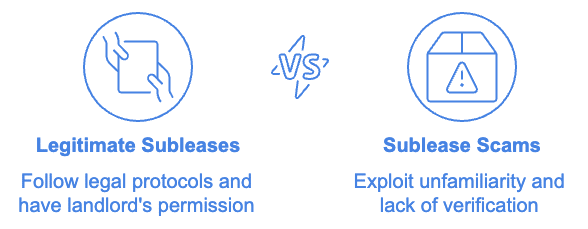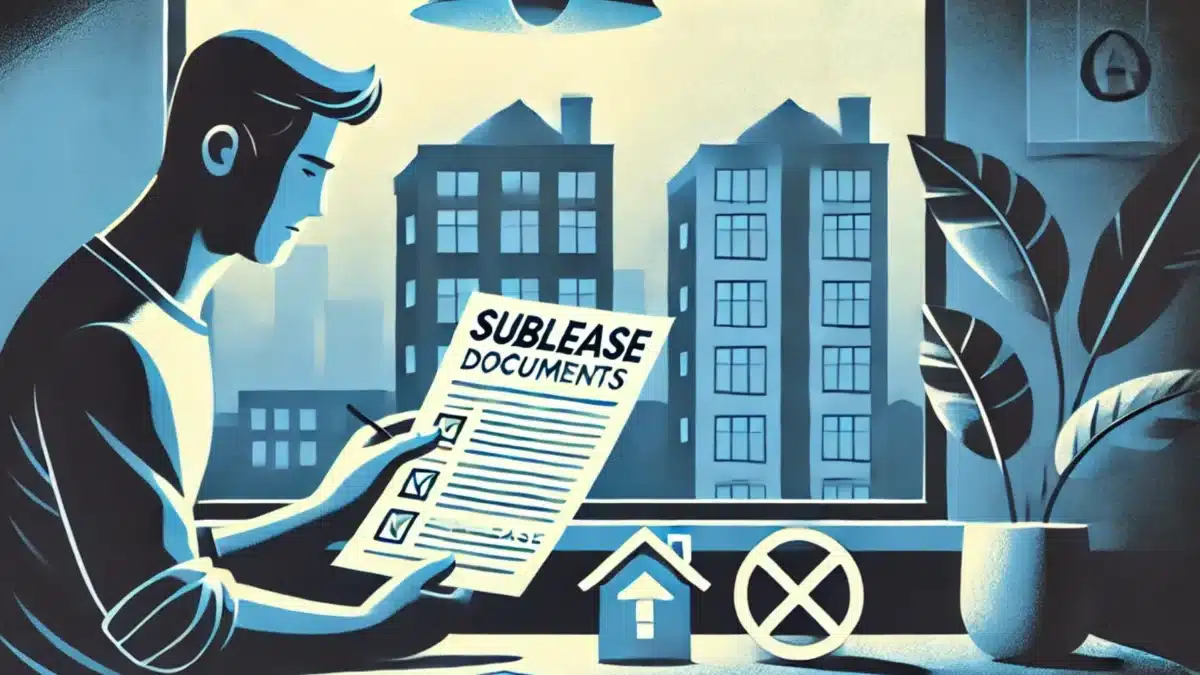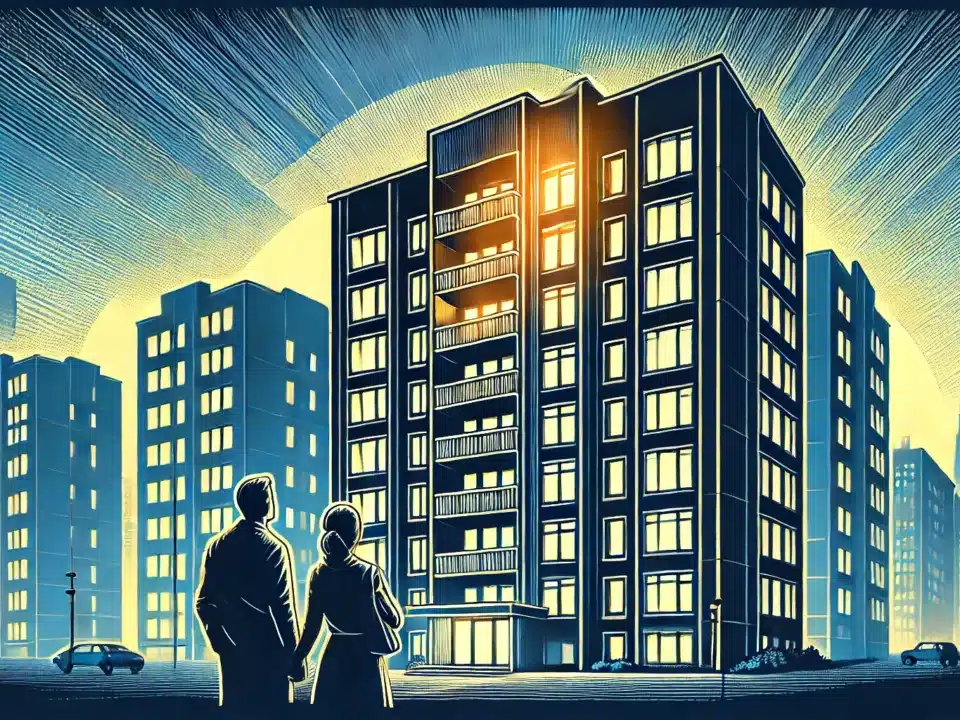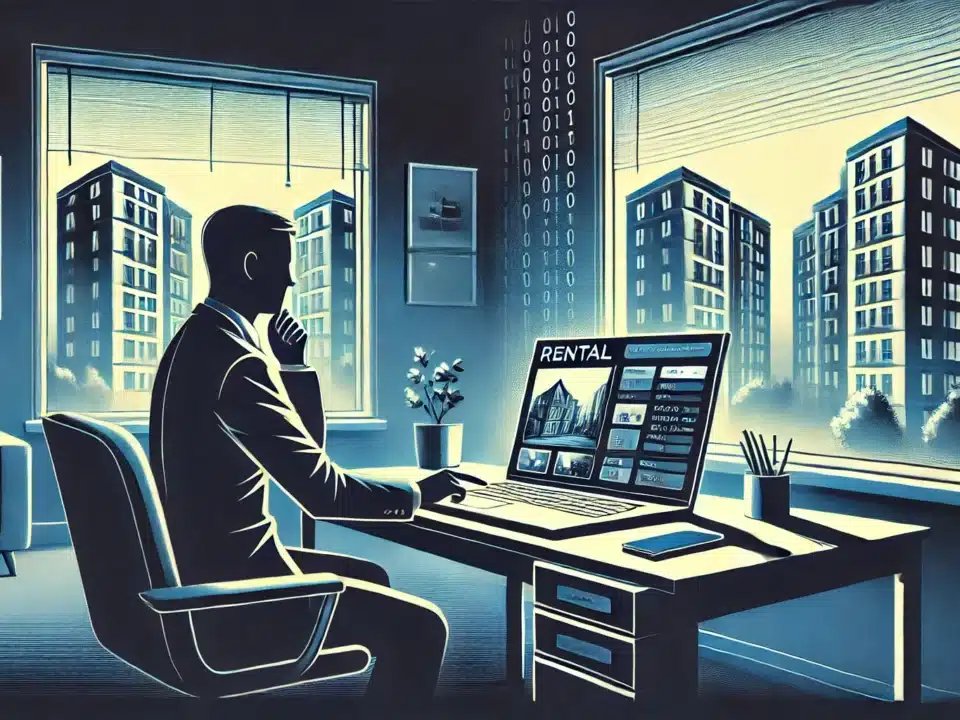
Fake Reviews and Housing Scams: How to Identify Real Feedback
September 23, 2021
Role of Payment Platforms in Rental Scams
November 14, 2021Subleasing can be a great option for renters who need flexibility, whether you’re a tenant looking to sublet your space or a renter searching for a short-term lease. But sublease arrangements also come with risks, including scams that target unsuspecting renters. Here at Section 8 Shield, we’ve looked into various types of sublease scams reported by readers across the U.S. and compiled practical tips to help you stay safe.
Understanding Sublease Scams
In a typical sublease, the original tenant (known as the sublessor) rents out their apartment or house to a new renter (the sublessee). This arrangement is legal when done with the landlord’s permission and following local regulations. But scammers exploit this setup in various ways, taking advantage of the sublessee’s unfamiliarity with the original lease or property ownership. Here are the most common sublease scams and how to avoid them.

Common Types of Sublease Scams
1. Phantom Subleases
- How It Works: In a phantom sublease scam, the scammer claims to be the current tenant and advertises a great apartment or room for sublease. They might even conduct virtual tours using old photos or video footage. After collecting deposits or rent, they vanish. In reality, the apartment is either occupied by someone else or doesn’t exist at all.
- Warning Signs: The sublessor seems overly eager to accept your application without a background check, and they often request a deposit before you see the property in person.
- How to Avoid It: Always visit the property in person before making any payments. Ask for a formal sublease agreement and check with the landlord or property management to verify the sublease arrangement.
2. Unauthorized Subleases
- How It Works: In this scam, a current tenant rents out their apartment or room without the landlord’s knowledge or permission. When the landlord finds out, the sublessee may face eviction, despite paying rent to the sublessor.
- Warning Signs: The sublessor avoids discussing the landlord’s involvement or dismisses questions about the landlord’s approval. They may pressure you to sign quickly or pay immediately.
- How to Avoid It: Confirm with the landlord or property management that the sublease is authorized. Legitimate subleases should include the landlord’s written approval.
3. Deposit Theft
- How It Works: Some scammers advertise a legitimate-looking sublease, conduct a tour, and sign a fake agreement. They collect a deposit and often the first month’s rent, then disappear. By the time the sublessee realizes what happened, the “sublessor” is long gone, and the money is unrecoverable.
- Warning Signs: The sublessor asks for large upfront payments, particularly in cash or via untraceable payment platforms like Venmo or Cash App, and becomes unavailable soon after receiving payment.
- How to Avoid It: Use secure payment methods, such as checks or credit cards, and avoid paying in cash. Request a receipt and verify the sublessor’s identity and authorization to sublet.
4. Bait-and-Switch Tactics
- How It Works: In bait-and-switch scams, the sublessor advertises a beautiful unit with great amenities but shows a different, less desirable unit during the tour. They often claim the original unit is temporarily unavailable but will be ready soon. Once payment is made, the sublessee is stuck with the inferior unit or no unit at all.
- Warning Signs: The unit you’re shown doesn’t match the description or photos in the listing, and the sublessor insists the original unit will be ready soon.
- How to Avoid It: Never pay for a unit you haven’t seen in person. If the unit shown is not the one advertised, walk away and report the listing.
Red Flags to Watch for in Sublease Agreements
| Vague or Missing Terms | What to Look For: Legitimate sublease agreements outline rent, security deposit terms, length of the sublease, and tenant responsibilities. Red Flag: If the agreement is incomplete, missing critical details, or written in vague language, the sublessor may be hiding important information. What to Do: Request a detailed agreement. A legitimate sublease contract should be as clear as a standard lease. |
| Unusual Payment Requests | What to Look For: Normal sublease agreements specify a clear payment method and schedule. Red Flag: If the sublessor insists on cash payments, wire transfers, gift cards, or other untraceable payment methods, it’s likely a scam. What to Do: Use traceable payment methods and request a receipt for each payment. Most legitimate landlords or sublessors will be transparent about payment terms. |
| No Access to the Original Lease | What to Look For: A trustworthy sublessor should have access to the original lease and be able to explain the lease terms that affect the sublease. Red Flag: The sublessor refuses to share the lease or deflects questions about it, often because they’re hiding unauthorized terms or conditions. What to Do: Ask to see the original lease, or at least review a copy of it with the landlord’s approval, so you’re fully aware of any restrictions or obligations. |
Tips for Safe Subleasing
1. Meet the Sublessor in Person
- Whenever possible, meet with the sublessor face-to-face. Meeting in person can help you assess their credibility and gather more information about the property. If the sublessor avoids meeting or insists on handling everything remotely, consider it a warning sign.
2. Verify the Sublessor’s Identity
- Ask to see a photo ID to confirm the sublessor’s identity and compare it with the name on the original lease or any property documents. Many scammers operate under fake names, so it’s essential to verify this before making any payments.
3. Involve the Landlord
- A legitimate sublease will involve the landlord. Contact the landlord or property management to confirm the sublease arrangement and ensure they approve of the sublessee. This step can save you from entering into an unauthorized agreement that could lead to eviction.
4. Get a Written Agreement with Clear Terms
- Make sure the sublease agreement covers essential terms, including rent amount, payment schedule, security deposit, sublease duration, and tenant responsibilities. Both you and the sublessor should sign it, and ideally, the landlord should sign as well to confirm approval.
5. Document the Property’s Condition
- Before moving in, take photos and note the property’s condition. Documenting the apartment’s state protects you from being blamed for pre-existing damage and increases the likelihood of getting your deposit back when the sublease ends.
Consider this example:
A young professional found a sublease on a popular rental site. The unit looked ideal, and the “sublessor” provided a virtual tour. After signing a sublease agreement and paying a $1,500 deposit through Cash App, she arrived to move in—only to find the real tenant, who had no idea about the sublease, living there. The scammer disappeared, and she lost her money.
Stories like this highlight how important it is to meet in person, involve the landlord, and avoid quick online payments. Sublease scams are a real threat, but careful steps can prevent most of them.
Sublease scams are a real threat
But careful steps can prevent most of them.What to Do If You Suspect a Sublease Scam
1. Report the Scam on Section 8 Shield
- If you believe you’ve encountered a sublease scam, report it on Section 8 Shield’s scam alert page. Your report will help others by adding to our database of rental scams and alerting future renters about potential scams.
2. Contact Local Authorities
- Many sublease scams are illegal, and law enforcement may be able to help recover lost funds. File a police report with as much information as possible, including copies of communications, payment records, and the sublease agreement.
3. Notify Your Payment Platform
- If you used a payment platform, such as PayPal or Zelle, report the scam to their support team. They may be able to freeze the scammer’s account or initiate a refund, depending on the payment terms and timing.
4. Alert the Landlord
- Let the landlord know about the scam so they can take action to prevent further fraudulent subleasing attempts. Landlords often take immediate steps to protect their property and help tenants avoid scammers.
Final Thoughts
Subleasing can be convenient, but scammers have turned it into a way to steal money from unsuspecting renters. By knowing the red flags and taking steps to verify each part of the agreement, you can protect yourself from these scams. Section 8 Shield is here to guide you with resources, tools, and scam alerts to make the rental market safer. Subleasing should be a simple, stress-free experience, and with a few precautions, you can ensure it stays that way.




